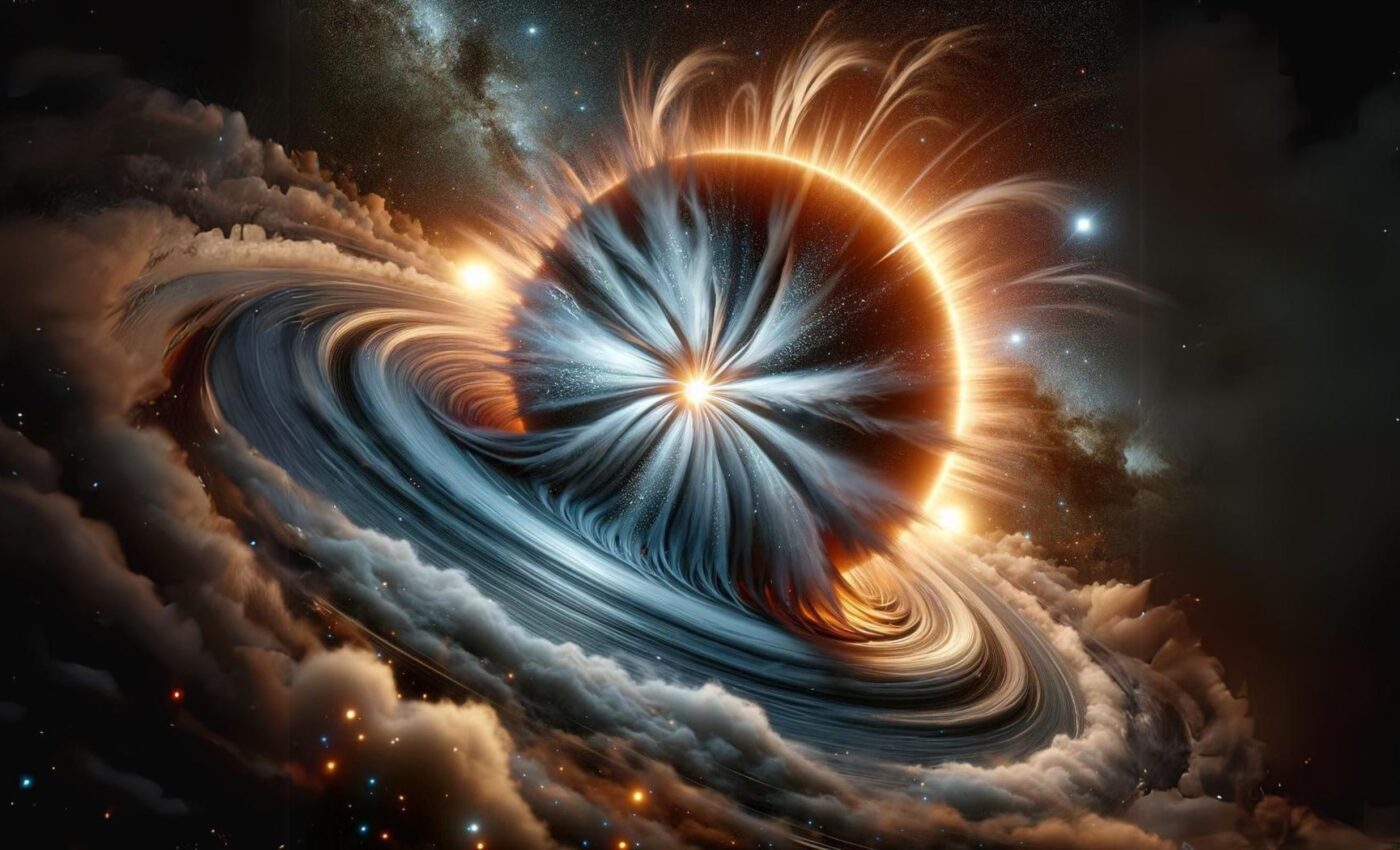
Baby stars release "sneezes" of gas and dust as they develop
Researchers at Kyushu University have elucidated the formative processes of baby stars, offering a fresh perspective on the early stages of star formation.
Using the ALMA radio telescope in Chile, the team recently observed intriguing phenomena around these nascent stars.
They playfully term these phenomena “sneezes,” which involve the protostellar disks surrounding baby stars releasing dust, gas, and electromagnetic energy. The researchers detailed their groundbreaking findings in The Astrophysical Journal.
How baby stars are born
Stars, including our own Sun, emerge from stellar nurseries—massive conglomerations of gas and dust. This matter gradually condenses to form what we call a stellar core, or a baby star, enveloped by a protostellar disk. The disk plays a crucial role in the star formation process and is also a site of significant magnetic activity.
Kazuki Tokuda, an expert in Kyushu University’s Faculty of Sciences and lead author of the study, explained the magnetic dynamics involved.
“These structures are perpetually penetrated by magnetic fields, carrying with them magnetic flux,” said Tokuda. “However, retaining all this magnetic flux would result in magnetic fields many times stronger than those observed in any known protostar.”
The role of “sneezes” in baby star formation
The prevailing astrophysics theory suggests that the magnetic field weakens as the stellar core absorbs material. However, the team from Kyushu University has uncovered a different mechanism at play.
Focusing on MC 27, a stellar nursery about 450 light-years away, the team collected data that revealed unexpected “spike-like” structures emanating from the protostellar disk.
“These spike-like structures extended a few astronomical units from the protostellar disk. Initially puzzling, we soon realized these were spikes of expelled magnetic flux, dust, and gas,” said Tokuda.
The expulsion is a result of interchange instability, where variations in the magnetic field interact with the differing densities in the protostellar disk, forcibly ejecting magnetic flux outward. The researchers compared this dynamic expulsion to a sneeze, where particles are rapidly expelled.
Further observations identified similar spikes thousands of astronomical units away, suggesting these “sneezes” are a recurring event during baby star formation.
Broader implications for astronomy
The findings clarify the process of magnetic flux expulsion. Additionally, they contribute to the broader understanding of how baby stars and planets form.
“Similar spike-like structures have been observed in other young stars, becoming a more common discovery in astronomy,” noted Tokuda.
By studying these “sneezes,” scientists hope to further elucidate the conditions under which stars and planets come into existence.
More details on baby stars
Baby stars, or protostars, are nascent stars in the initial phases of stellar evolution. They represent a critical stage in the life cycle of stars, from clouds of gas and dust to fully formed stars. Here’s a detailed look at the formation and characteristics of protostars:
Formation in molecular clouds
Protostars begin their life in molecular clouds, which are cold, dense regions of space filled with gas and dust. These clouds contain the basic building blocks for star formation. Under the influence of gravity, regions within these clouds begin to collapse when the internal pressure can no longer support the cloud against gravitational pull.
Collapse and increase in density
As the cloud collapses, it increases in density and temperature. The material at the center of the cloud forms a dense core that heats up, creating an ideal environment for a star to form. This phase is often hidden from view, as the surrounding dust and gas obscure the forming star.
Accretion of material
Around the dense core, a protostellar disk forms, consisting of gas and dust that continues to feed the growing protostar through a process called accretion. This disk is crucial as it channels material towards the core, allowing the protostar to gain mass and energy.
Thermal and radiative processes in baby stars
As the core’s temperature and pressure increase, nuclear fusion becomes imminent. However, in the protostar phase, the energy generated is primarily from the gravitational contraction rather than nuclear fusion (which defines a true star). The protostar radiates away energy, primarily as infrared light due to the thick material surrounding it.
Outflows and jets
Baby stars often exhibit powerful jets and outflows – streams of gas ejected from the poles of the accretion disk. These phenomena are thought to be driven by magnetic fields that help to remove angular momentum from the accreting material, allowing more material to fall onto the star.
Evolution into T-Tauri stars
As the protostar continues to evolve, it enters the T-Tauri phase – a pre-main sequence stage where it becomes visible in optical wavelengths and where strong winds begin to clear away surrounding material. This phase marks the end of the most obscured part of a star’s formation.
Onset of nuclear fusion
Eventually, the temperature and pressure at the core of the protostar become high enough to initiate hydrogen fusion, marking the birth of a new star. The star then enters the main sequence phase, where it will spend most of its life.
Understanding the detailed processes involved in the formation of protostars is crucial for astronomers studying the life cycles of stars and the formation of galaxies. Kyushu University’s ongoing research promises to deepen our understanding of the universe.
—–
Like what you read? Subscribe to our newsletter for engaging articles, exclusive content, and the latest updates.
Check us out on EarthSnap, a free app brought to you by Eric Ralls and Earth.com.
—–













